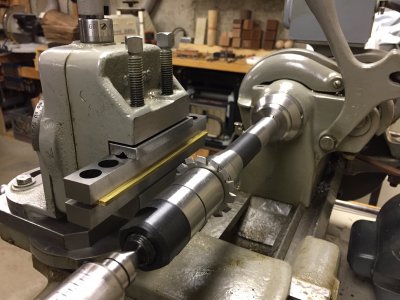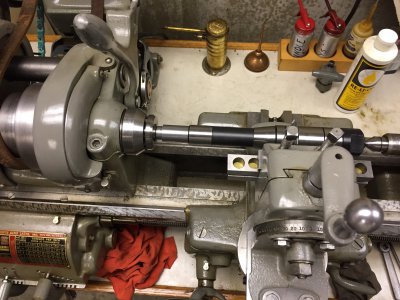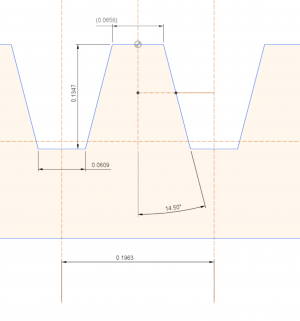- Joined
- Feb 28, 2019
- Messages
- 501
An update ---
I've worked out how to set my lathe up as horizontal mill so I can use my gear cutters to cut 6" long racks. I made and adaptor that threads into cutter arbor instead of a drawbar and I can drive it from a 1/2" collet. It's going to let me cut multiple racks at once in brass. I've worked out how to accurately advance the carriage for each tooth.
I've also figured out how to cut the sawtooth profile - if I decide I really need to do it.
Here are the pic for the horizontal gear cutter setup on my lathe.


Thanks again for the suggestions, definitely helped me work it out.
-Dave B
I've worked out how to set my lathe up as horizontal mill so I can use my gear cutters to cut 6" long racks. I made and adaptor that threads into cutter arbor instead of a drawbar and I can drive it from a 1/2" collet. It's going to let me cut multiple racks at once in brass. I've worked out how to accurately advance the carriage for each tooth.
I've also figured out how to cut the sawtooth profile - if I decide I really need to do it.
Here are the pic for the horizontal gear cutter setup on my lathe.


Thanks again for the suggestions, definitely helped me work it out.
-Dave B


